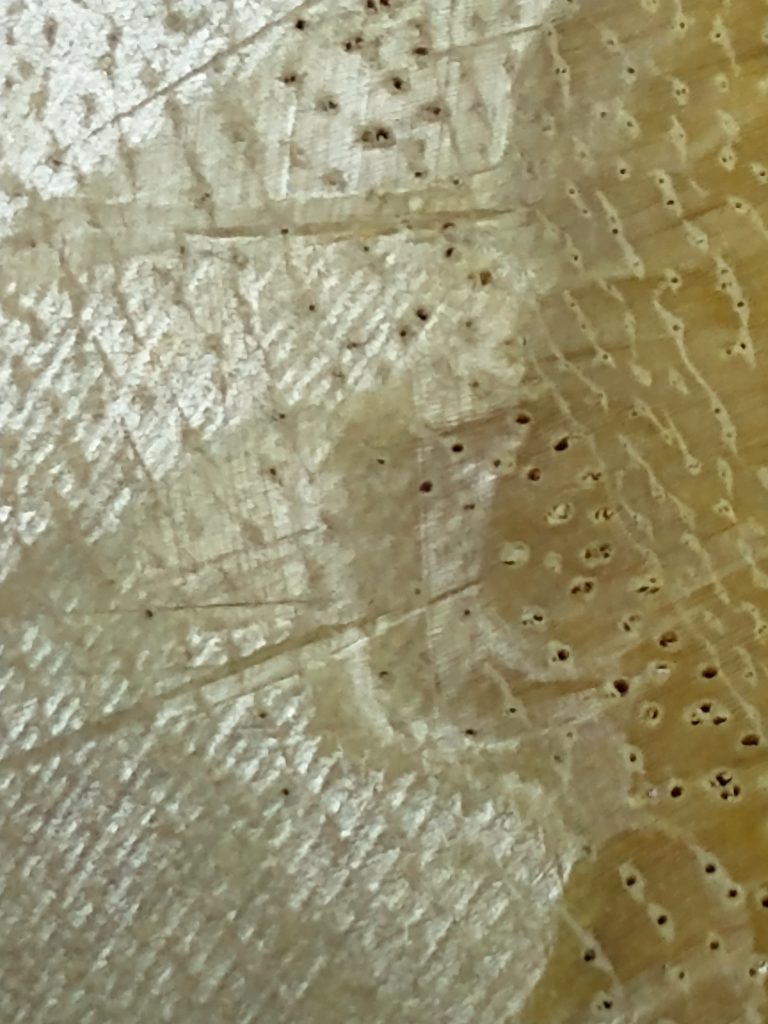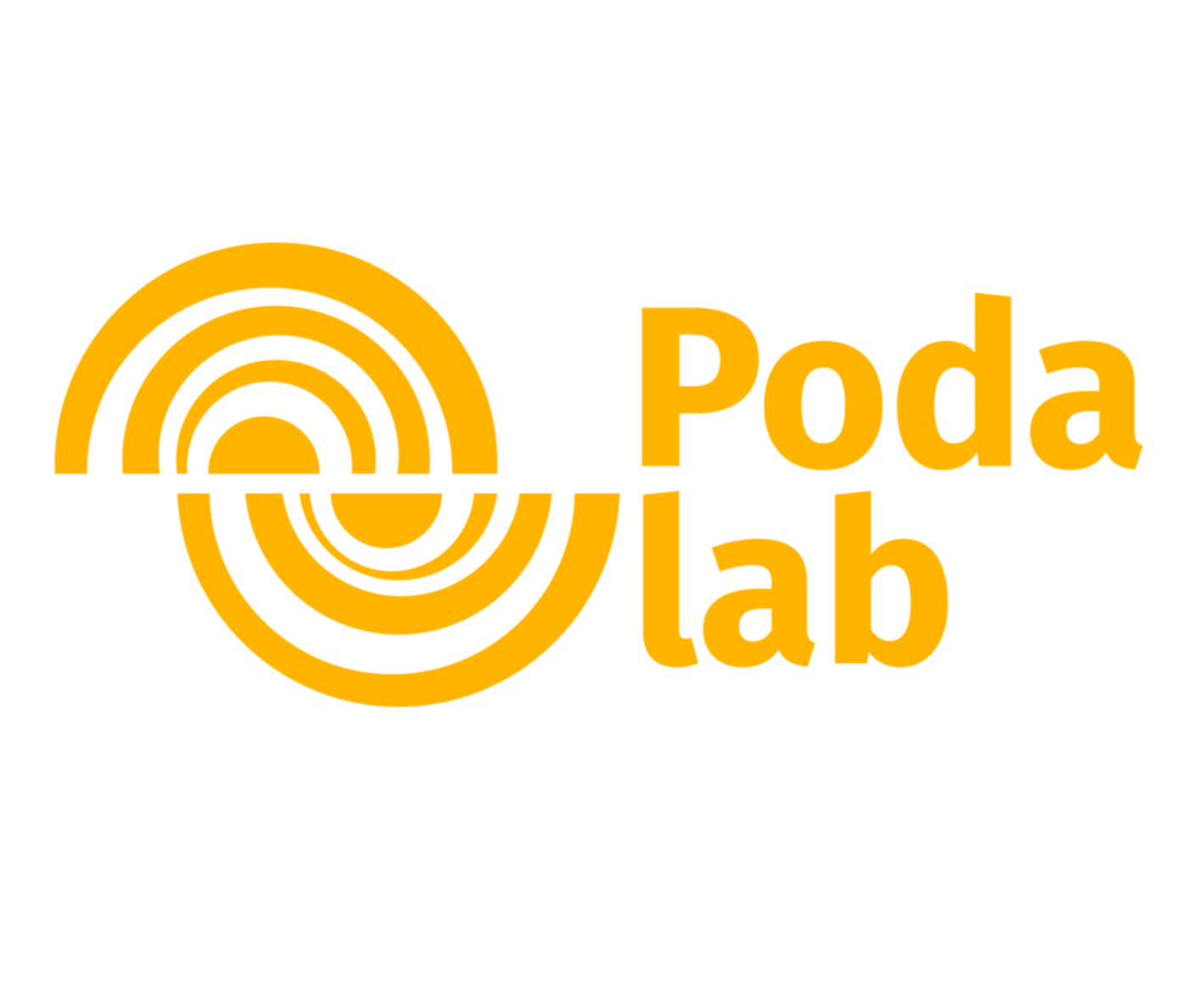Pruning
Recommendations for the pruning process
Bearing in mind that urban forests add great value to the quality of life of the residents of a city, and that, even when removing them, they can still benefit the community in other ways, it is important to carry out in advance, as part of afforestation management, the tree inventory. The tree description must include:
- species, life cycle stage;
- dimensions: diameter at breast height (DBH), height from the ground to the first branches, number of trunks;
- general tree health and condition, contaminants, hazards;
- accessibility and physical factors that may complicate removal;
- historical significance, sentimental significance and unique or innovative feature,
and owner.
After gathering inventory data, you can determine the tree’s suitability for transport and processing. Generally, trees in good condition and with DBH > 30 cm can be used for value-added wood products such as flooring. Smaller, lower quality trees can be used for lower-value industrial uses, such as firewood.
The distinction of products will also depend on their own ability to collect, transport and process wood. For example, you may have a large, high-quality tree but, without the ability to transport it, may be the only or most economical option available is to turn it into “crackers” or logs up to 50 cm tall.
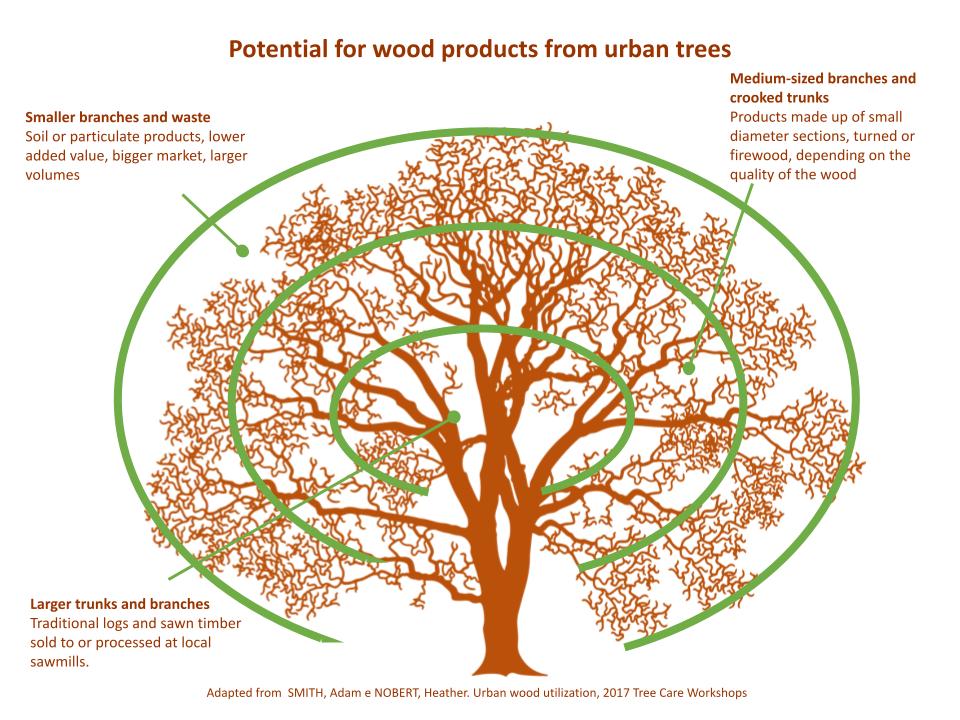
Technical aspects of pruning
Several municipalities and specialized institutes provide guidelines and recommendations for pruning, some of which can be found in the “library” tab. It is essential that these guidelines are followed to minimize the negative effects of the service on the health of the tree, since it is always a type of aggression to the plant.
No caso dos galhos maiores (de maior interesse para a proposta deste site, pelo potencial de uso da madeira), a literatura técnica recomenda a poda em 3 cortes, como na ilustração a seguir. O primeiro e o segundo corte, com o auxílio de cordas, possibilitam o direcionamento da queda do ramo, desviando de obstáculos como fios e edificações. O terceiro corte (aquele que secciona o galho) deve preservar o colar e a crista da casca intactos.

Bearing in mind that the longer the branches with a larger diameter, the greater the possibilities of use, this recommendation becomes even more important to avoid accidents. The most recommended equipment for pruning and suppression operations are:
- chainsaw
- pruner with telescopic arm
- munck truck with wood grapple or tractor with grapple for wood and trailer
- mini mobile sawmill
- leaf vacuum blower
- pruning saw with curved saw
- kit A02 – complete tree pruning arboriculture
- extendable ladder
- reels, sisal rope and hot stick
- buckets
- chipper
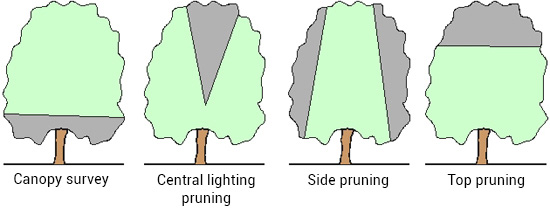
Design: Embrapa Semi-Arid. Adapted from: <https://www.agencia.cnptia.embrapa.br/Agencia22/AG01/arvore/AG01_48_24112005115222.html>
And to ensure the best subsequent use of the wood
Some procedures right after pruning are essential:
- identify the tree species at the site;
- separate waste by diameter, also on site;
- define a species coding system and mark each branch potentially usable as wood, with the corresponding code;
- protect the 2 ends of the sections of branches with polyethylene glycol (PEG), to preserve the wood, preventing and delaying its degradation and shrinkage.
- allocate the branches that can be used in a sorting and pre-treatment yard, separated by species.
The flowchart below shows 3 options for the initial preparation of the material, right after pruning, an activity to be carried out in the sorting and pre-treatment yard.
Species identification by axial parenchyma
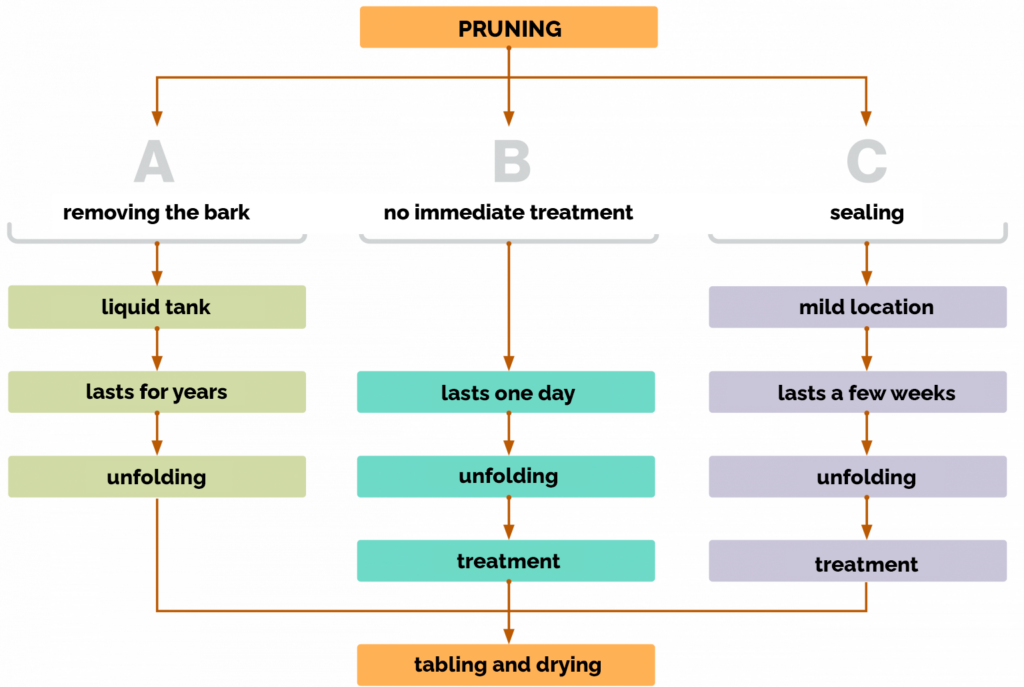
If branches of different species have been mixed, it is recommended at least that the lots of each journey be separated, and that the species contained in each one be identified. To assist in this later identification, which is much more difficult, depending on the training of the responsible technical team, it is recommended to use species identification sheets. When the characteristics visible to the naked eye are not enough to identify the species of the lot, the groups of the same species must be grouped and use a small 10x magnifying glass to analyze the axial parenchyma (tissue formed by generally cylindrical or prismatic cells oriented parallel to the largest tree axis, which works as a “fingerprint” of the species) of one specimen from each set.
